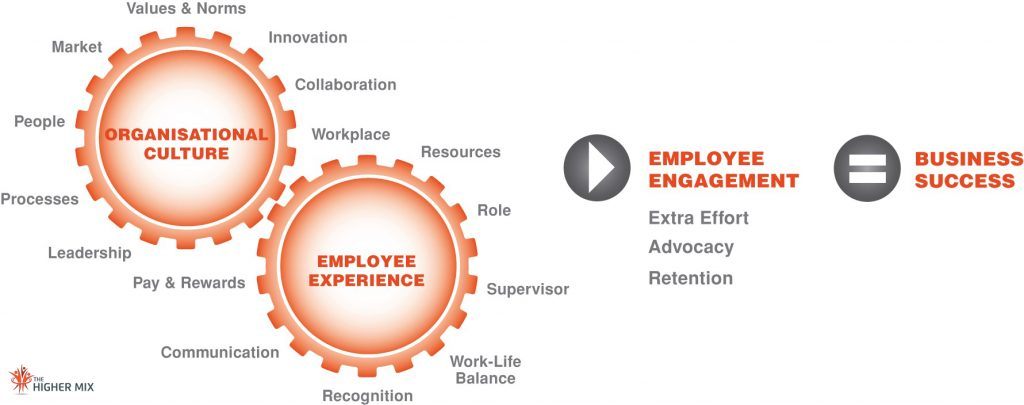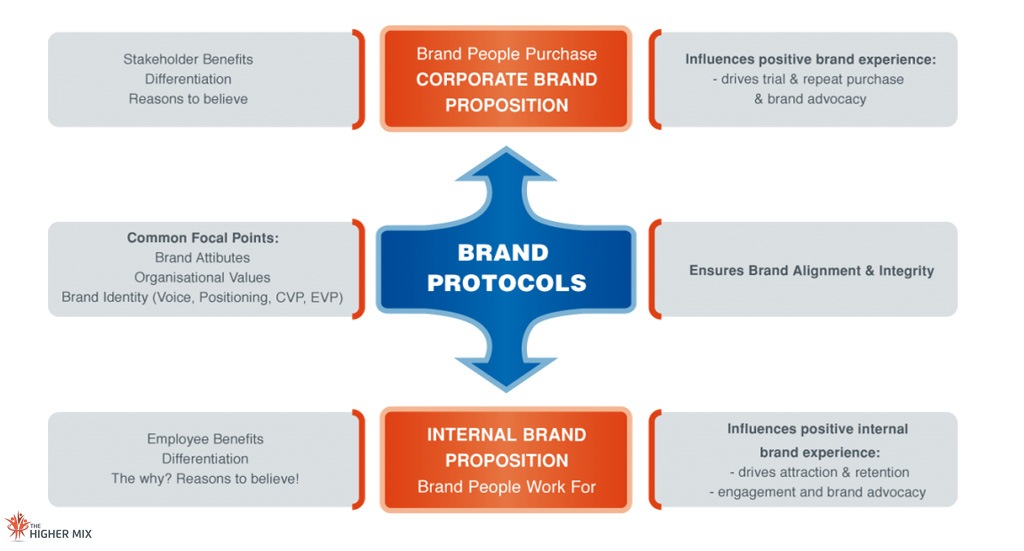Smoother Workforce Transition Ahead.
As machines take on the routine, often dangerous work, teams get to use their intrinsic human talents more fully. Not only have day-to-day working conditions and habits changed dramatically – so too our working consciousness. As teams grapple with Beyond Covid-19 scenarios, we can now appreciate just how much human brains are being rewired in the process of all this transformation.
Improve the Brand Experience
Internal branding brings your brand alive for teams; strengthens their resolve and emotional connection to the work and organization. Customer service and team performance (*loyalty of both) rely heavily upon the state of internal brands. Success comes for those organisations with the right approach; structure, technologies and people to support it.

[thrive_link color=’purple’ link=’https://www.thehighermix.com/branding/company/brand-alignment/’ target=’_blank’ size=’small’ align=’right’]Why Brand Alignment Matters?[/thrive_link]
Internal Branding is a multi-stakeholder ‘whole of systems’ approach
Assisting organisations to reflect upon and to mine team interactions, attitudes, values, communications, and engagement. These are the very roadblocks to workflows and performance. More clearly see how it is your people fit in (or moreover, see themselves fitting into a brand new system.) How it is the existing structures/systems/technologies are influencing their perceptions, motivations, and productivity.

We guide Project Teams to bridge Strategy and Execution
Our holistic approach across businesses ensures as little inconsistency as possible between company identity (brand promise), the offer (EVP, CVP) and your operations (operational environment, internal teams, servicing etc.) Insights gleaned from examining/analysing/measuring certain constructs; for a collective sense of belonging, more uptake and commitment from your people who are living the brand day-to-day. When your tribe understands their role; the impact they have/how they contribute to the company’s growth and achievement – this energises them, and they push harder for results.
Techniques, Tools & Guidance on the Internal Brand
We anchor Internal Brand projects in a most agile way, across the different disciplines – HR, marketing, brand management, strategy, and operations. Naturally enough, beginning with leadership mandates and styles and behaviours; always at the forefront of any strategic internal branding effort.
We partner with companies to:
- Encourage Businesses to Scale;
- Reimagine Workforce Skills development / Retaining Environments;
- Address worker transitions/ challenges, brought about by Change and Technology;
- Introduce programs to guide businesses to retool labour forces, re-train and credential to a new level of skills;
- Encourage, inject greater fluidity and mobility in the workplace so you can better manage difficult transitions;
- Strategy/ opportunities for workers to upgrade their skills; with in-house training, partnerships with education providers, internships and so on;
- Fresh environments to help teams learn marketable new skills; incl. mid-career retraining/skills mix needed for successful career changes;
- New approaches to improve skills and teach new ones -incl. to older workers.
Bridging gaps between exec aspirations, technicalities, attitudes of project teams, and internal stakeholders most impacted by the change
- Quantitative | Qualitative Research review of brand and culture environments.
- Assessment of the Employee life-cycles – tribe dynamics, engagement, behaviors.
- Organisational structure, people processes, practices and touch-points, values, vulnerabilities, distinctiveness, unmet needs of key stakeholders.
- Identify inefficiencies incl. cost savings, reduction of workforce-related expenditure and waste.
- Observe and report on limiting systems, processes – deconstruct; identify duplication | inefficiencies.
- Balance process with external feedback/ perceptions from clients, customers, shareholders, and other external parties.
- Address human inter-relationships in meaningful ways; better-manage experiences; inspire internal talent and customers.
- Engage potential talent externally; encourage talent to join.
- Mid-to-longer term strategies to build capabilities and skills.
- Measure brand health, organisational health and organisational readiness.
- Mid-to-longer term strategies to build capabilities and skills.
- Activities, process, communications to empower teams – understanding of future intent, who, what, why your company does what it does
- Reviews of the HR and Marketing techstack; growth hacking.
- Assess styles, methods communication/marketing, digital footprints.
- Comms Relevancy (mainstream and digital): reach, efficiency, personalisation, tactics, channels, platforms and measurement
- Comprehensive metrics around both team & customer experience: performance metrics (unaided recall, awareness, recruitment, response rates, time-to-fill, retention etc).
